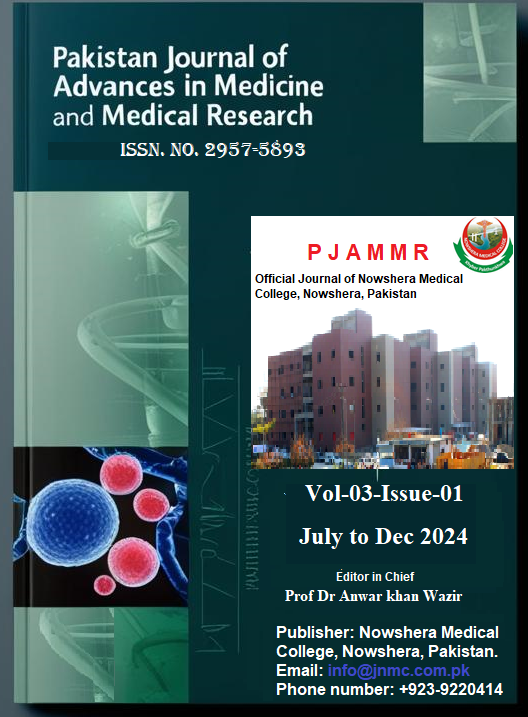Frequency Of Hyperuricemia In Acute Exacerbation Of Chronic Obstructive Pulmonary Disease
Original Article
DOI:
https://doi.org/10.69837/pjammr.v3i1.59Keywords:
Hyperuricemia, COPD, AE-COPD, Uric AcidAbstract
Background: hyperuricemia as important biomarker for chronic obstructive pulmonary disease (COPD) cases which flare up. High levels of serum uric acid show a relationship with worse inflammation together with higher levels of oxidative stress and hypoxia which make AE-COPD more severe. The evaluation of hyperuricemia occurrence in AE-COPD helps doctors understand both treatment approaches and patient prediction outcomes.
Objectives: The study investigated both the prevalence of hyperuricemia in AE-COPD patients together with its impact on clinical characteristics and hospitalization period and treatment results.
Study design: A Cross-Sectional Study.
Place and duration of study. Department of Pulmonology PAF Hospital Islamabad from jan 2023 to Dec 2023
Methods: This study analyzed 131 patients to evaluate the association between serum uric acid (SUA) levels and clinical outcomes during hospitalization. Hyperuricemia was defined as SUA ≥7 mg/dL for men and ≥6 mg/dL for women. Demographic and clinical characteristics including age, gender, smoking status, and comorbidities were recorded. Statistical analysis was performed using SPSS, with continuous variables reported as mean ± standard deviation. P-values <0.05 were considered statistically significant.
Results: 131 patients who averaged 67.5 ± 8.2 years in age. The Study showed that hyperuricemia affected 45% of all patients under study. Patients experiencing hyperuricemia needed an average of 7.8 ± 2.4 days in hospital compared to the 5.6 ± 1.9 day stay of patients who did not have hyperuricemia. This difference was proven statistically significant (p < 0.05). Patients with hyperuricemia experienced both more severe disease exacerbations and elevated hospital mortalities according to the study findings (p = 0.03 and p = 0.04 respectively). Both age group and gender composition showed no appreciable distinction when comparing individuals with normal uric acid levels to those with elevated levels (p > 0.05).
Conclusion: Hospitalized AE-COPD patients with hyperuricemia experience longer admissions together with more serious exacerbations which lead to increased mortality rates. Risk assessment for AE-COPD patients can benefit from serum uric acid levels which function as an effective biomarker for clinical management. Research requires additional investigation to discover therapeutic applications.
Downloads
Published
How to Cite
Issue
Section
License

This work is licensed under a Creative Commons Attribution-NonCommercial 4.0 International License.






